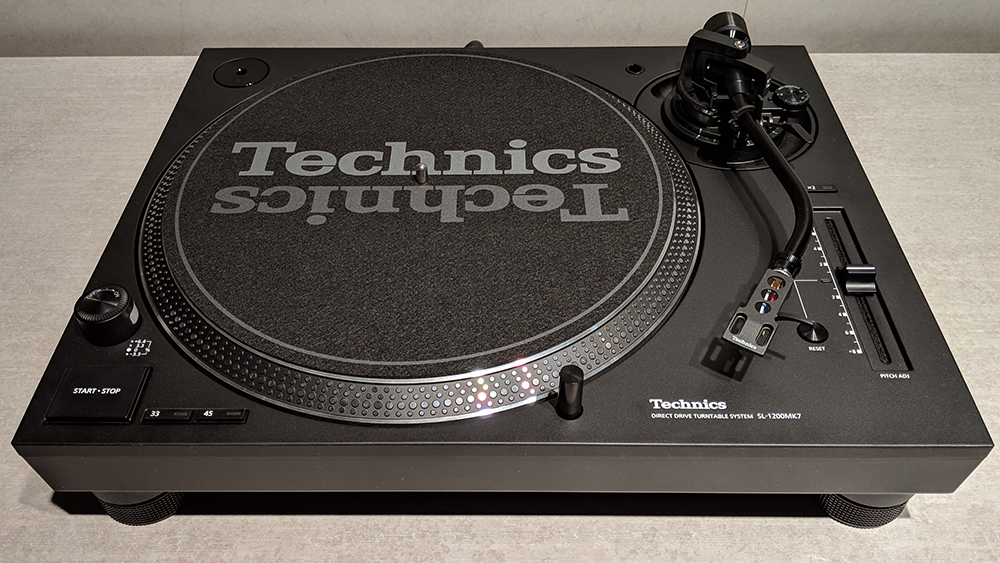Early Verdict
Pros
- +
Iconic design
- +
Relatively affordable
- +
New features
Cons
- -
Build is cheaper
- -
No silver model
Why you can trust What Hi-Fi?
The Technics SL-1200 is back. Again. The famous turntable range, which launched as an audiophile record player but was quickly adopted by professional DJs, is back for 2019.
Following the release of high-end, hi-fi turntables over the last few years - with eye-watering prices - Technics has now entered the market at a more affordable level. The matte black deck (there's no silver model), which will launch as the SL-1210 MK7 in the UK, EU and Australia, and the SL-1200 MK7 in Japan and the US, will cost £899 / €1000 / $1200 / AU$1599, upon its release this summer.
With its classic, minimal design, and sky-high reputation amongst enthusiasts, the new SL-1200 MK7 is sure to get a lot of attention. So, what's new? And is it worth the hype?
Build and design

The SL-1200MK7 is built in Malaysia (as is the SL-1500C) rather than the Japan factory where the high-end decks are built and naturally uses new parts and designs throughout. At first glance, the MK7 looks instantly familiar to anyone with so much as a passing knowledge of Technics turntables. While other decks got increasingly over-designed and piled on features, the SL-1200 kept it simple.
Ten years may have passed since the MK6 but Technics has seen no need to change the design, complete with S-shaped aluminium tonearm, and familiar button layout. Albeit the arm and buttons are now all in sleek black.
The familiar pitch control is on the right, and gives you +8/16% change. The stop/start button is bottom left, plus buttons for 33 1/3 and 45rpm, plus the ability to switch to 78 rpm. There's a strobe light indicator, which now can be switched from red to blue, and a new push-down white LED stylus illuminator. Around the back are detachable power and phono cables.
Visually, that's about it. And rest assured it looks great - fans of the design will definitely love the matte black finish. There's no silver for now but we get the feeling there might be some day.
The latest hi-fi, home cinema and tech news, reviews, buying advice and deals, direct to your inbox.
A closer look at the new Technics SL-1200 MK7 turntable. #CES2019 pic.twitter.com/uSHWlsnuOSJanuary 8, 2019

The SL-1210MK7 doesn't feel as solid as the more expensive SL-1200GR and SL-1200G models. The stop/start and speed buttons don't have the same reassuring response nor quite the bombproof feel, and the LED stylus illuminator, which you can pop up and down, felt a little flimsy on the sample we saw. There was no legacy SL-1200 model on hand for a direct comparison but we'll look to further clarify the build differences.
We do know the aluminium die-cast chassis is integrated with a "special material consisting of ABS mixed with glass fibre", as opposed to the aluminium and BMC on the premium models or the original T.N.R.C. (Technics Non-Resonance Compound) found on earlier DJ decks. And at 9.6kg the deck is lighter than the SL-1200GR (11.5kg) or the MK6 (11.7kg). Deadening rubber remains on the underside of the deck as well and there are four solid feet.
Inside a new coreless direct drive motor has been designed, removing the iron core to eliminate 'cogging' - variation in the rotation speed - and to keep a super-smooth rotation. The torque performance is said to match that of the MK5, with the spec measuring 1.8 kgf·cm compared to 2.2 kgf·cm on the more expensive SL-1200GR.
Features
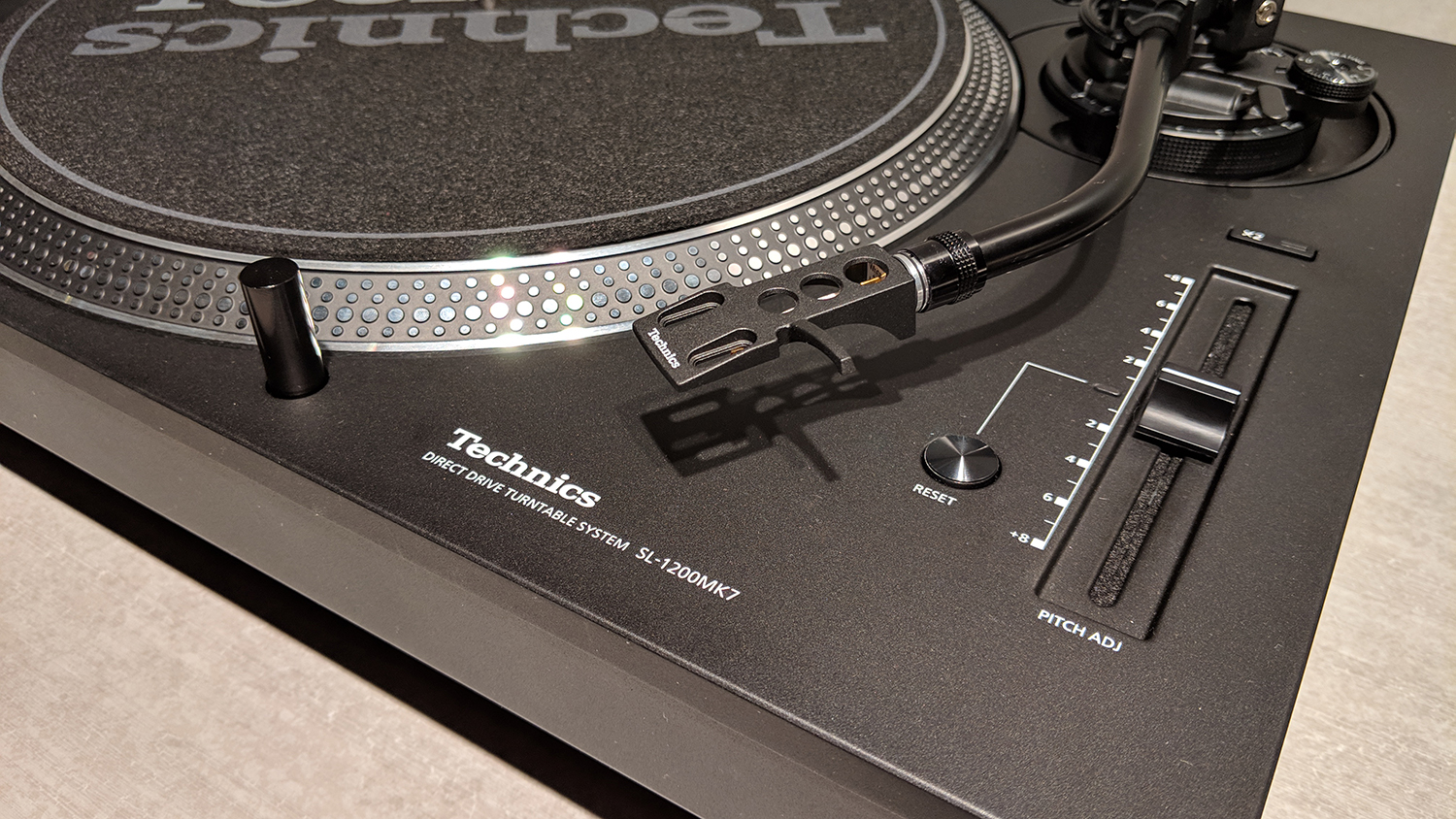
Technics is adamant it didn't want to make unnecessary changes to the SL-1210 MK7 when it comes to bells and whistles but there are a few new additions to the feature set. First is Reverse Play, which by holding one of the speed buttons and then tapping start / stop, will reverse the direction of the deck. It's a similar technique for accessing 78 rpm.
Technics CTO Tetsuya Itani shows how the new Reverse Play feature works on the SL-1200 MK7. pic.twitter.com/hb0xzpWfCpJanuary 9, 2019
You can also adjust the starting torque and brake speed, in part thanks to motor technology refined in the development of Blu-ray drives. This adjustment is a little more complex, and involves removing the platter to access some switches buried within the turntable. Still, most people are unlikely to concern themselves with this adjustment but it gives professionals some extra room for experimentation.
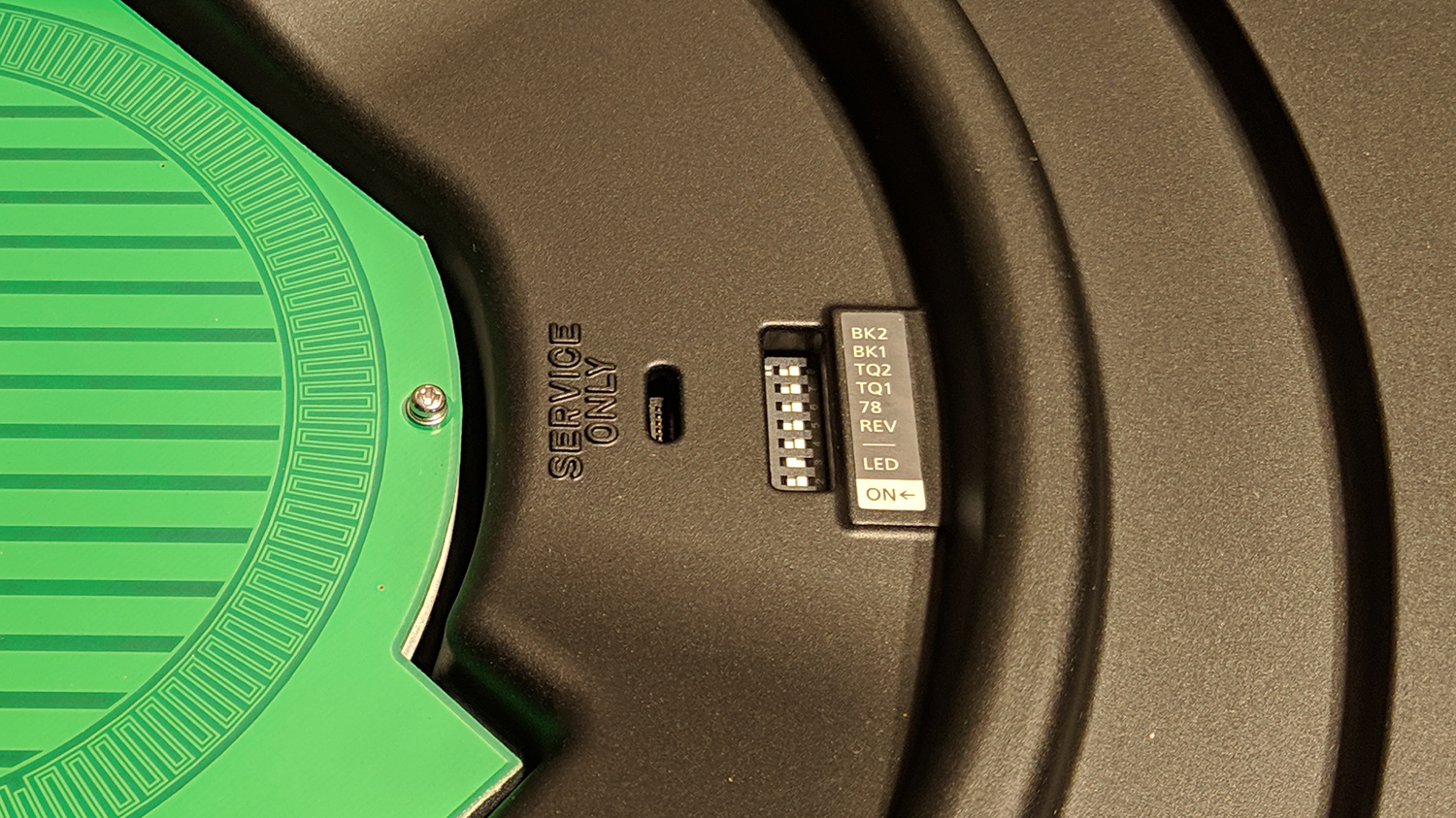
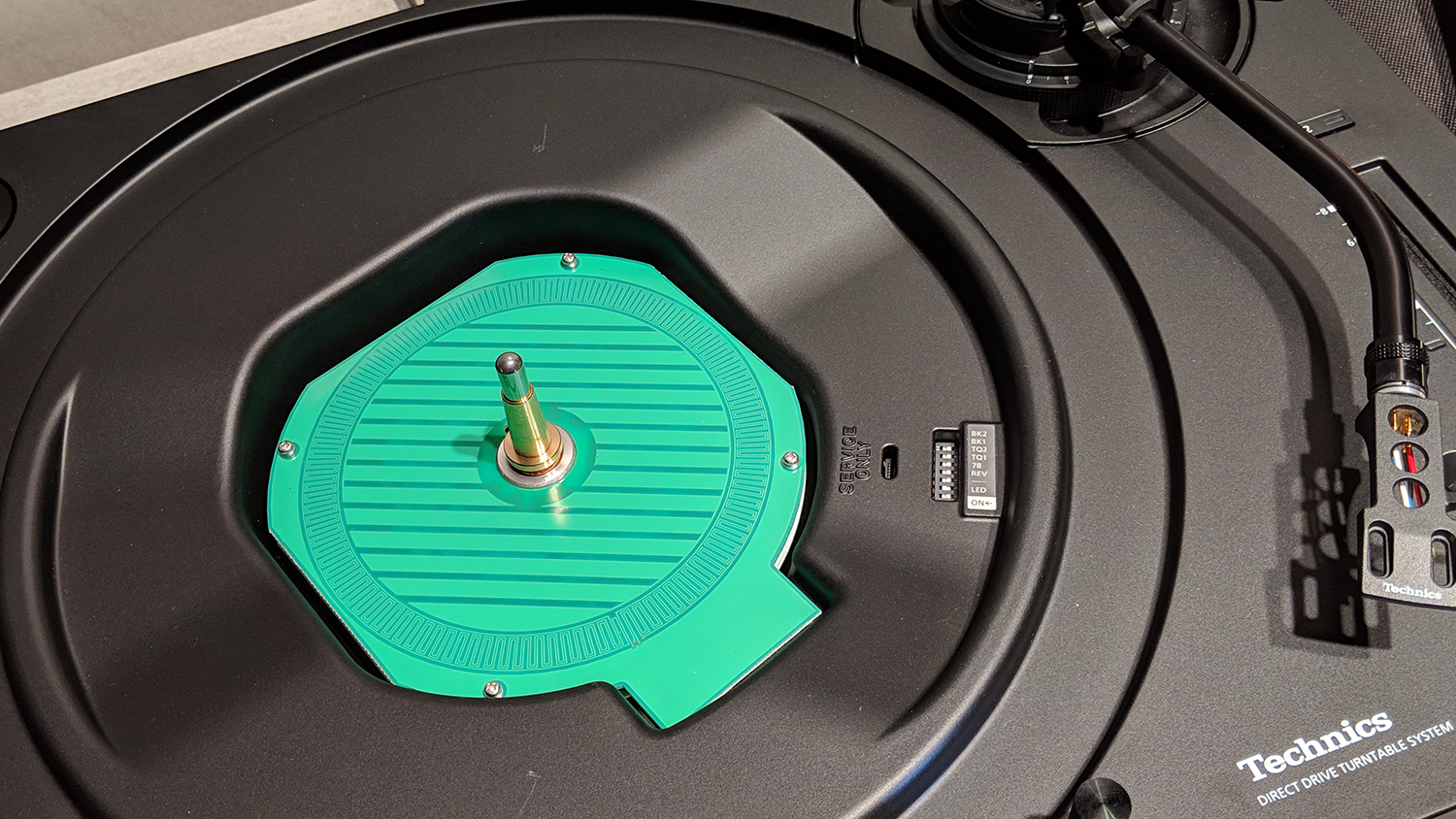
If you'd like to further customise your SL-1200 experience, this hidden set of adjustments is also where you'll find the switch for changing the LED strobe light colour. Red or blue are your options. Talking of lights, the stylus illuminator has been upgraded for better visibility of the stylus tip compared to previous models.
Detachable phono and power cables are here and will be very welcome for those familiar with previous generations fixed plugs or if you want to upgrade the bundled wires.
Performance

As always, first impressions on a busy showfloor are only ever first impressions. Conditions are far from ideal, time is short, and there's no possible way to compare to similar products. But of course we still took the opportunity to get our hands on the new deck and later to hear it in action on a Technics reference system.
If you like the Technics styling, which we and many others certainly do, then you can't go wrong here. The deck looks great and the black finish is smart. There will no doubt be plenty of clamour for a silver model but nobody will be disappointed with this version.
Seeing the deck next to the more expensive SL-1200G (£2499/$3800) and SL-1200GR (£1299/$1699) model, and having a chance to compare the relative builds, there's no denying this model feels the cheaper turntable. It is a lot cheaper after all.

Do we think it feels as robust as previous generation DJ decks, such as the MK6? Hard to say for certain, but we don't think the buttons and LED indicator felt quite as satisfactorily solid. How the platter performs in use remains to be seen (we'll dust-off our scratching skills when we get the deck in for review). DJs around the world were reportedly involved in testing the design and development, so that should minds at ease.
Sonically, the Technics room certainly sounded great. Technics CTO, Tetsuya Itani, says the deck sounds "very similar" to the new SL-1500C, but there's a clear step-up in sound as you move up through the more expensive hi-fi decks. We heard the new SL-1200 MK7 and then the SL-1500G, and the latter comfortably brought more detail and scale to the sound, but the 1200 sounded well-balanced and musical in isolation.
Initial verdict
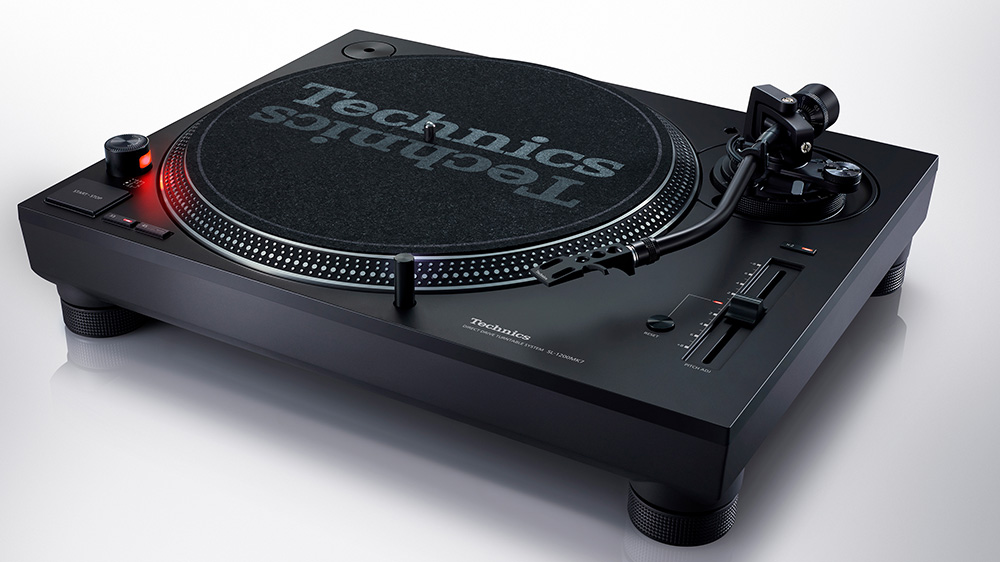
The new SL-1200 MK7 has predictably got a lot of people very excited. An iconic slice of sonic history, those looking to revisit the glory days of Technics DJ decks may be more than satisfied to simply see that a new model, aimed at the DJ audience and coming in at a more affordable price, has finally arrived. And we wouldn't blame them.
The trademark design is only enhanced by some small updates to the functionality, so we only hope the build and performance does the deck justice when the finished article lands in shops around the world later this year.
MORE:
The making of: Technics SL-1000R
The history of Technics by the man who helped shape it
What Hi-Fi?, founded in 1976, is the world's leading independent guide to buying and owning hi-fi and home entertainment products. Our comprehensive tests help you buy the very best for your money, with our advice sections giving you step-by-step information on how to get even more from your music and movies. Everything is tested by our dedicated team of in-house reviewers in our custom-built test rooms in London, Reading and Bath. Our coveted five-star rating and Awards are recognised all over the world as the ultimate seal of approval, so you can buy with absolute confidence.
What is a hands on review?
'Hands on reviews' are a journalist's first impressions of a piece of kit based on spending some time with it. It may be just a few moments, or a few hours. The important thing is we have been able to play with it ourselves and can give you some sense of what it's like to use, even if it's only an embryonic view.
